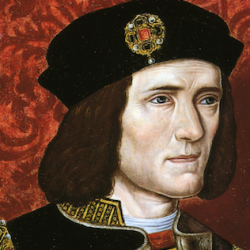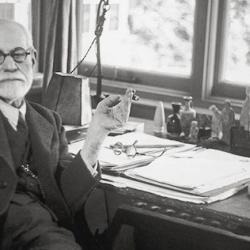Note #1: Act 1, scene 2 of King Lear, which initiates Edmund’s plots against father Gloucester and brother Edgar, is structured chiastically:
A. Edmund’s first soliloquy.
B. Edmund with Gloucester, accusing Edgar.
C. Edmund’s second soliloquy.
B’. Edmund with Edgar, sowing suspicion that Gloucester is suspicious of Edgar.
A’. Edmund’s third soliloquy.
The structure beautifully reinforces the substance. Edmund is present throughout, the single continuity of the scene. Edmund surrounds the scene, just as his plot encircles Gloucester and Edgar like a tightening noose. At the same time, Edmund stands in the middle of the scene, dividing his father from his brother. He besieges them in order to sow suspicions that will lead to a breach.
Note #2: The end of Act 4 has the sense of an ending. After the mayhem of Act 3 (Lear going mad on the heath, the brutal blinding of Gloucester), Act 4 begins to mend the world. Just when he thinks he’s hit bottom, Edgar discovers his father wandering blindly toward Dover to throw himself from the cliff. Edgar is able to save him, and to restore himself to his father’s favor. In the last scene of Act 4, Lear and Cordelia are reunited and reconciled, sealed by Cordelia’s lovely gift of forgiveness (“You have some cause to hate me,” says Lear; “No cause, no cause,” Cordelia replies).
If the play ended there, we’d have some major ends tied up and some hope of happiness. At the end of Act 4, we seem poised for a comic ending; all we need is the deaths of Edmund, Goneril, and Regan to make the world glad. Act 5 obliges, but then adds the deaths of Lear, Gloucester, and Cordelia. We end with only a glimpse of reconciliation, while the tide of chaos continues and engulfs innocents. Here as in several other respects, the pathos of Lear is heightened by the play’s gestures toward comedy, by the hope it encourages and then dashes.
(Check here for a more complete analysis of Lear.)















